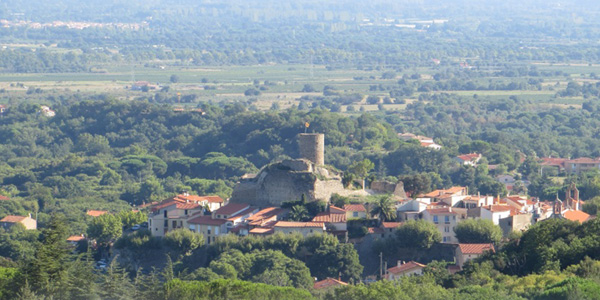The Village
Here, you won't find 4 seasons, but a succession of summers and springs in the middle of autumn or winter.

Laroque des Albères, as it is known today, was formed in many stages. In the 9th Century, it was under the control of the bishop of Elne, who in 834 received confirmation, from Emperor Lother, of these possessions : the ‘Saint Félix cella’and the ‘Saint Julien cella’, rural monastic-like establishments but attached to the diocese and the ‘villa Torrente’, no doubt a rural hamlet of modest size. At the end of the 10th century we hear mention of the ‘villa Rochas’, today referred to as the ‘Roca Vella’.
The initial settlement was probably made up of different hamlets of agricultural or forestry activity held by either the church or small-holders, (two of which are mentioned in 854).
In the 11th century the area passes under the denomination of the seigneurale family who demonsrated its power by building a castle. The castle is first mentioned in 1100 when Guillem de Salses gave the ‘kastrum de Rocha’, to his son Oliba. Archives confirm that from the second half of the 12th century, feudal regimes ordered the grouping and settlement of a ‘cellera’ around the castle.
Aymat Catafau described Laroque as follows: "This ‘cellera’ appears as a grouping of ‘celliers’ around the castle by order of the Seigneur, in order to protect and control the peasants and their harvests [...], and not like the Catalan Sagreres which were inititated by the peasants themselves, with the cemetery encircling the church.”
At the end of the Middle Ages, the texts are a lot more common and we have more precise information on the form and the nature of the villagers’ habitat.
The Capbreu (a kind of medieval cenus) from 1375-1379 refers to the fortified centre of the village as ‘fortalicium castri’, which means "castle fort". This description confirms that the inhabitants came together under the protection of the castle, around a fortified promontory. As far as the church is concerned, it was encompassed in the seigneurial fortification. A small suburb of six houses is also mentioned.
A generation later, the Capbreu of 1396-1397 tells us that the inhabitants not only declared some homes in the ‘castrum’ but also in the ‘cellera’, the two terms still being used at that time. This Capbreu mentions the castle, or rather the ‘mota’ which supports it, against which the houses were juxtaposed.
In the chronicals from the time of the reign of Peter the Ceremonious, we hear of a siege led by him in July 1344, on Laroque Castle. The texts mention the fortified village as well as its suburbs.